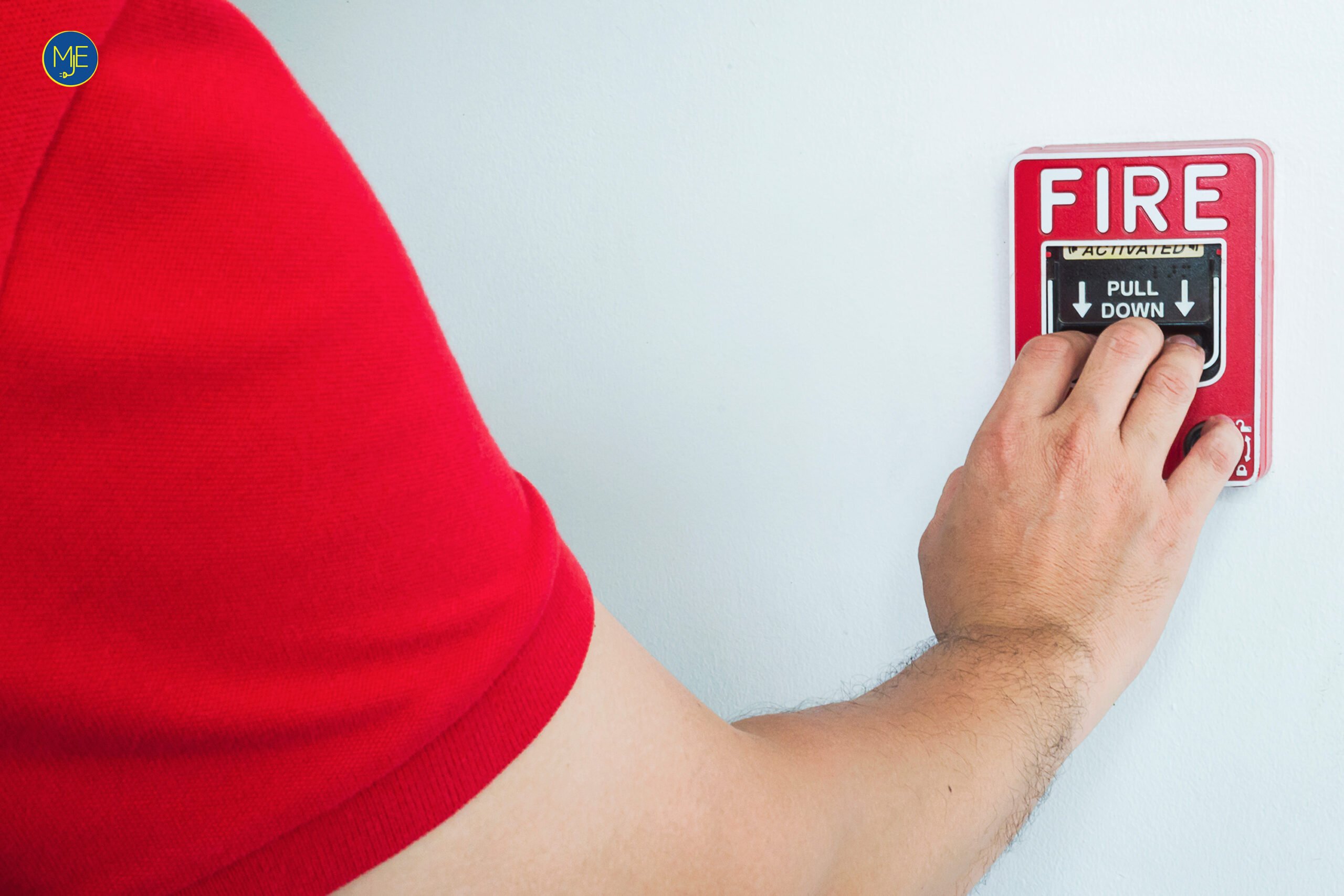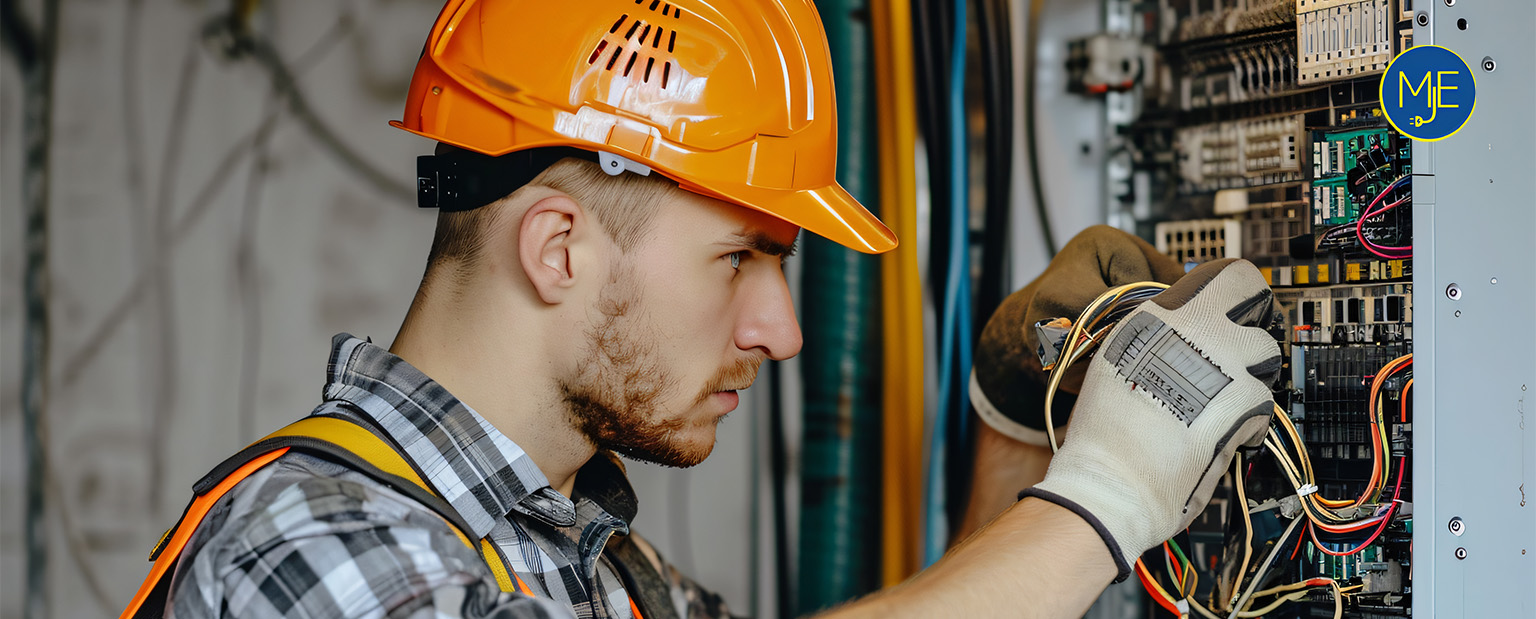We all know the importance of exit and emergency lighting in the workplace. It’s essential for helping people evacuate quickly and safely in an emergency. However, somewhat lesser-known details include what regulations and standards should you be aware of.
This comprehensive guide will explore what these lightings are, how you should carry out exit, and emergency light testing etc.
What are exit and emergency lighting?
Exit and emergency lighting provide visual guidance to people during an emergency. It typically consists of a system of luminaires, such as LED lights. They are connected to a battery-powered source, and they will illuminate during a power failure.
The lighting is typically placed at the exits and pathways of buildings, such as stairways, corridors, and lobbies. This is to ensure people’s safe and efficient evacuation in a fire or other emergency.
Exit and emergency lighting are important for safety reasons. It helps people navigate unfamiliar environments and to locate the nearest exit. In addition, it helps to reduce the risk of panic and confusion during an evacuation.
There are two main types of exit and emergency lighting: self-contained and centralised.
- Self-contained exit and emergency lighting systems consist of individual luminaires that are powered by a backup battery. These are typically installed near the exits of a building. These are suitable for smaller projects.
- On the other hand, centralised exit and emergency lighting systems are connected to a central power source, such as a generator. They are typically installed throughout the building. These are suitable for very large projects.
Exit and emergency light testing
It is important to ensure that exit and emergency lighting systems are regularly tested and maintained to keep them in good working order when needed. A licensed electrician should do testing every six months to ensure that they run for 90 minutes on battery after a power loss. You must maintain a logbook to record the test results.
When testing exit and emergency lighting, it is important to ensure the luminaires are functioning correctly. This includes checking that the luminaires will illuminate, that the bulbs are not burned out and that the batteries are fully charged. In addition, it is important to check that the luminaires are positioned correctly and that all cables and connections are secure.
It is also important to test the emergency lighting system’s response time. You can do this by simulating a power failure and then measuring the time it takes for the emergency lighting system to illuminate. The time should be within the manufacturer’s recommended response time. A licensed electrician should carry out the testing.
Exit and emergency lighting standards
The Australian standard is the key benchmark that governs the exit and emergency lighting requirements. It specifies the standards to follow when installing and maintaining the lights. It governs the performance of the products.
The Australian standard that governs exit and emergency lighting is AS 2293. This standard has three parts.
- AS 2293.1 – This standard specifies the system’s design and required level of illumination for safe evacuation.
- AS 2293.2 – This part of the standard specifies the inspection and maintenance requirements.
- AS 2293.3 – This part specifies construction compliance.
Exit and emergency lighting regulations in Victoria
If a residential or commercial building has a floor area bigger than 300m2, you should fix emergency and exit lights. This is not just limited to indoors. You should fix them underground, stairways and car parks.
You should brightly light these darker areas to provide a safe evacuation route in an emergency. By law, every exit sign in Australia should feature an image of a running man in green.
Benefits of exit and emergency lighting
There are various benefits of installing exit and emergency lighting on your property. These benefits are:
- It is essential for providing safe and efficient evacuation in the event of an emergency.
- It helps to reduce the risk of panic and confusion during an evacuation.
- It also helps reduce the risk of accidents, as people can navigate unfamiliar environments more efficiently.
- In addition, exit and emergency lighting are relatively cost-effective. It is easy to install and maintain and is typically energy efficient.
- It is also an excellent way to ensure that your workplace meets the relevant safety regulations.
You should brightly light these darker areas to provide a safe evacuation route in an emergency. By law, every exit sign in Australia should feature an image of a running man in green.
How to install exit and emergency lighting

Installing exit and emergency lighting is relatively straightforward. However, it is vital to follow the manufacturer’s instructions and ensure that the system is installed correctly.
- The first step is identifying the locations where you should install the luminaires. This typically includes exits, stairways, corridors, and lobbies. It is crucial to ensure that the luminaires are installed at the correct height and securely mounted.
- The next step is connecting the luminaires to a power source and a battery backup. It is essential to ensure that all cables and connections are secure. Ensure the battery backup can power the system for at least 90 minutes in the event of a power failure.
- Finally, it is vital to ensure that the luminaires are tested and maintained following the manufacturer’s instructions. This typically involves testing the luminaires every month and documenting the results in a logbook.
A licensed electrician should do this to ensure that the lights are installed as per the relevant requirements.
Best practices for maintaining exit and emergency lighting
Exit and emergency lighting systems need to be regularly tested and maintained to keep them in good working order when needed. Here are some best practices to follow when maintaining exit and emergency lighting:

- Test the luminaires every month (although the regulations specify every six months) and document the results in a logbook.
- Ensure that the luminaires are functioning correctly and that the batteries are at full capacity.
- Check that the luminaires are correctly positioned and that all cables and connections are secure.
- Test the emergency lighting system’s response time by simulating a power failure. Then, measure the time it takes for the emergency lighting system to illuminate.
- Replace any damaged or defective luminaires.
- Ensure that the emergency lighting system can provide illumination for at least 90 minutes in the event of a power failure.
Common issues with exit and emergency lighting
Although exit and emergency lighting are relatively easy to install and maintain, a few common issues can arise. These issues include faulty wiring, corroded connections, and dead batteries.
It is essential to address these issues as soon as possible to ensure the system is functioning correctly. You can do this by testing the luminaires monthly and replacing any damaged or defective ones. Also, ensure that the batteries are at optimum charge level and that all cables and connections are secure.
Conclusion
Exit and emergency lighting are essential for providing safe and efficient evacuation in the event of an emergency. It is cost-effective, easy to install and maintain, and typically energy efficient. It is also an excellent way to ensure that your workplace or property meets the relevant safety regulations.
Regular testing and maintenance ensure they are in good working order when needed. You can do this by testing the luminaries at least every six months and replacing any damaged or defective ones. Also, ensure that the batteries are at optimum charge capacity and that all cables and connections are secure.
By following the outlined guidelines, you can ensure that your lighting system is up to date-and in good working order.
If you’re looking to install a lighting system, it is essential to ensure that the work carried out is compliant with the relevant safety regulations and standards. It is essential to contact a licensed electrician to handle the job.
Are you looking for a licensed electrician in Ballarat? Then don’t hesitate to contact MJ Electrician. Our team can help you with various electrical installations. That includes exit and emergency lighting too.
We can help you to fix the lighting according to the standards and keep you in line with the relevant regulations. Request a service if you need to test or install exit and emergency lighting in Ballarat.





